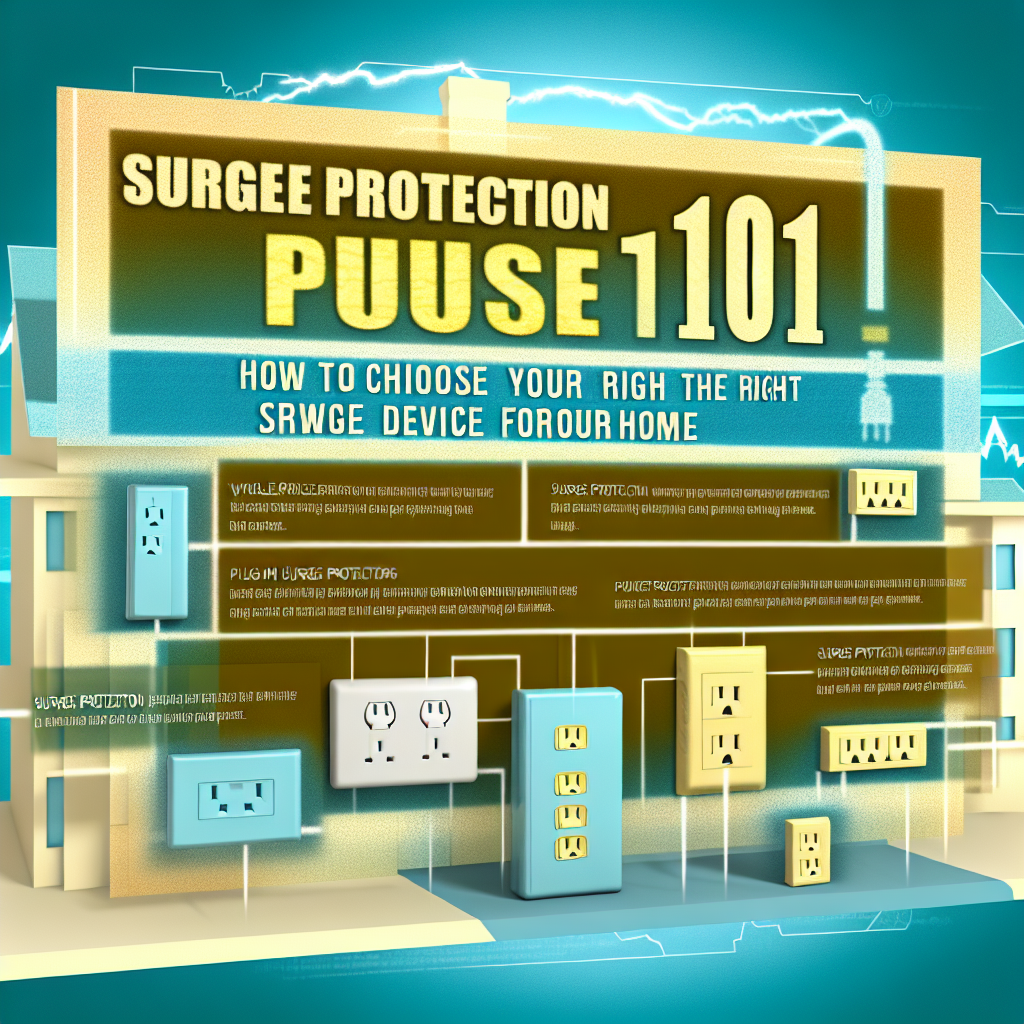Electrical surges can happen at any time and can wreak havoc on your home appliances and electronics. Understanding surge protection and selecting the right device is essential for safeguarding your investments. This article will guide you through the basics of surge protection and help you make informed choices.
What is a Power Surge?
A power surge is a sudden increase in voltage that can originate from various sources, including:
- Lightning strikes
- Power outages or restorations
- Electrical faults in the utility supply
- Heavy electrical demands (motor starts)
Why is Surge Protection Important?
Without adequate surge protection, your electronic devices are at risk of damage due to excess voltage. This can lead to the following issues:
- Shortened lifespan of appliances
- Data loss in computers
- Destruction of sensitive electronic components
Types of Surge Protection Devices
Several types of surge protection devices (SPDs) are available, including:
- Plug-in Surge Protectors: These are portable devices that plug into your outlets and provide protection for connected devices. They often include additional features like USB ports and overload protection.
- Whole-House Surge Protectors: Installed at your main electrical panel, these devices provide comprehensive protection for your entire home’s electrical system and all connected appliances.
- Point-of-Use Protectors: Typically used for specific high-value electronics such as televisions or computers, these are similar to plug-in models but offer enhanced features designed for sensitive devices.
How to Choose the Right Surge Protector
When selecting a surge protection device, consider the following factors:
- Joule Rating: This indicates how much energy the surge protector can absorb. Look for a rating of at least 1000 joules for decent protection.
- Clamping Voltage: This is the voltage level at which the surge protector will begin to redirect excess voltage. A lower clamping voltage offers better protection.
- Response Time: Faster response times mean better protection. Look for devices with a response time of less than 1 nanosecond.
- Warranty and Equipment Coverage: Many manufacturers offer warranties on the surge protector and coverage for any damaged equipment. This can be a deciding factor when comparing products.
Installation and Maintenance
For plug-in surge protectors, installation is straightforward. Simply plug the device into the wall and connect your devices. For whole-house surge protectors, it’s advisable to hire a licensed electrician for proper installation.
Additionally, regularly check your surge protectors for any signs of damage, and replace them if they’ve absorbed a significant surge, as they may not provide further protection.
Conclusion
Investing in surge protection is essential for safeguarding your electronic devices and appliances from damage. By understanding the types of surge protection devices available and considering the key selection criteria, you can take the necessary steps to protect your home and ensure the longevity of your electronics.





